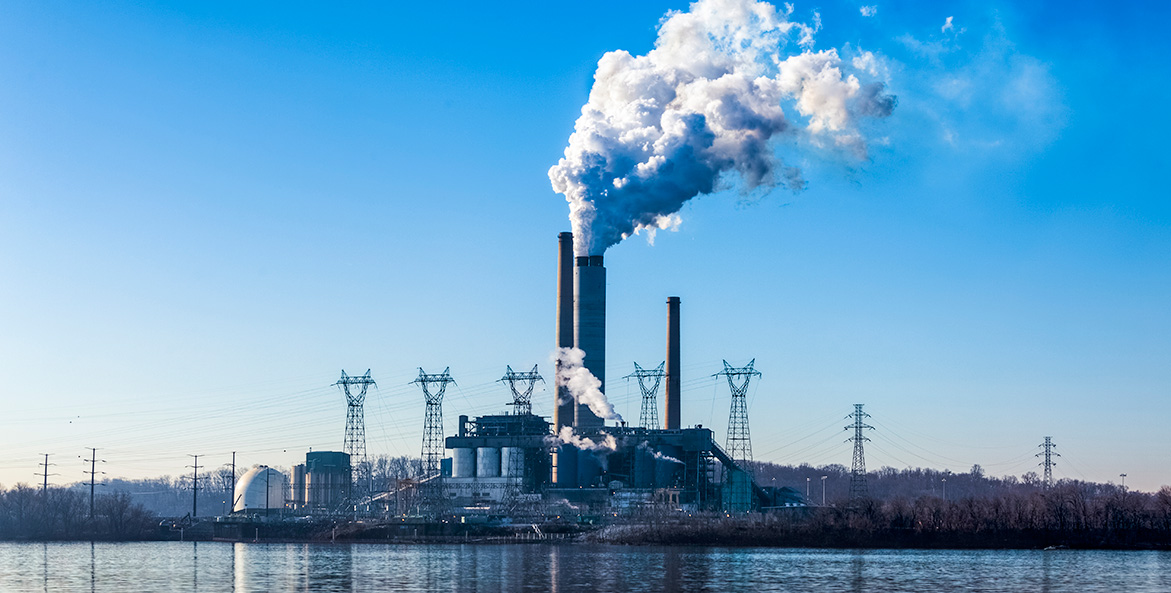Climate change is an urgent, existential threat to the planet, our beloved Bay, and the local rivers and streams across the region that we all treasure. But nearly a decade after EPA first proposed limiting planet-warming greenhouse gas emissions with the Clean Power Plan, dirty power plants still spew carbon emissions into the air virtually unchecked.
Carbon Pollution, Climate Change, and the Chesapeake Bay
Slashing carbon pollution from fossil fuel-fired power plants is essential to fighting climate change and its devastating effects. And we don’t have any time to waste. That’s why CBF supports the final greenhouse gas pollution limits EPA released in April, as well as the stricter controls the agency recently finalized for tailpipe emissions limits for passenger vehicles and heavy-duty trucks.
The watershed is already getting slammed by climate-change impacts like sea level rise, which is slowly swallowing Bay islands, eating into productive farmland, and flooding low-lying communities, even on sunny days. Warming waters hold less oxygen to sustain the fish, oysters, crabs, and other species that make our seafood industry world famous and draw countless recreational anglers, boaters, and other outdoor enthusiasts to our shores. Hotter average temperatures are wreaking havoc with farming and the rural economies it powers. More sweltering days also intensify dangerous “heat islands” in urban neighborhoods that lack tree cover—where people also disproportionately face health threats from multiple sources of pollution.
Tough carbon controls are the only way to slow climate change and mitigate the damage it is already doing. As an added benefit, these controls help improve water quality in the Bay and its many tributaries. Fossil fuel-fired power plants don’t just emit greenhouse gases. They also release an enormous amount of nitrogen oxides (NOx), making them a major source of nitrogen pollution in the watershed, too. Certain strategies for reducing greenhouse gas emissions also reduce NOx and other air pollutants.
Airborne Nitrogen Pollution Hurts Human Health and the Bay
More than a quarter of the excess nitrogen in the Bay comes from the air. Too much nitrogen fuels the growth of algal blooms that cloud the water and ultimately suffocate underwater vegetation and important Bay species like oysters and crabs. Inhaling air with high concentrations of NOx can worsen breathing conditions like chronic lung disease and asthma in the short term. It also may contribute to the development of asthma and potentially make vulnerable people more susceptible to respiratory infections, according to EPA.
Lowering nitrogen levels in the water is integral to meeting the cleanup goals EPA and the Bay states committed to in the Chesapeake Clean Water Blueprint. Less NOx and other emissions polluting the air also makes breathing easier for the watershed’s nearly 19 million residents. This is particularly true for communities near power plants, which in most cases are subject to multiple environmental and health stressors and often lack the financial and political resources to hold polluters accountable for the harm they do. Environmental justice community residents are also more likely than the general population to suffer from pre-existing heart and lung conditions that dirty air only exacerbates.
Air Pollution Comes from Beyond the Watershed
The Bay watershed comprises parts of six states (Delaware, Maryland, New York, Pennsylvania, West Virginia, and Virginia), plus the District of Columbia. But coal- and gas-fired power plant emissions that affect the watershed and the people who live here don’t just come from inside this 64,000 square-mile region, like water pollution.
A quarter of the NOx pollution that degrades water quality in the Bay and its waterways and endangers the health of people in our region comes from a much larger area known as the Chesapeake Bay’s airshed.
The 570,000 square-foot airshed is more than nine times larger than the Bay watershed. Its 16 states include parts of Indiana, South Carolina, Vermont, and Michigan, as well as parts of the Canadian province of Ontario. Within this vast airshed lie 614 fossil fuel power plants that together generate a total of almost 190 thousand tons of NOx a year, according to the most recent EPA data.
But three quarters of the 614 power plants emitting NOx that pollutes our air and water are located outside the Bay watershed. Together those 463 electric utilities outside the watershed pump out close to 165 thousand tons of NOx emissions annually. By fighting climate change and slashing NOx emissions, strong federal limits on greenhouse gas emissions from power plants are a win-win proposition for the Bay region and the people who live, work, and play here .
To explore more about this issue, check out our interactive map showing the location of all 614 fossil fuel-fired power plants in the Bay’s airshed and their annual nitrogen oxides emissions. You can also filter the view and related statistics relative to the Chesapeake Bay watershed (internal or external) or by state and/or county.




